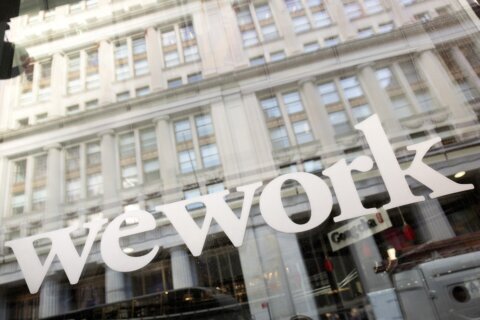After a year like 2016 — with its political upsets, social uncertainty and international instability — many are desperately looking forward to a change in 2017.
Unlike other major points of discussion in the news, real estate maintained an overall positive trend throughout 2016, with home prices increasing 4.8 percent over the course of the year through November, according to real estate information site Zillow. Results from Zillow’s most recent Home Price Expectations Survey of more than 100 economic and housing experts shows home values likely increasing by 3.6 percent in 2017 — continued growth, but slower than the past year.
Real estate functions in a cycle — both seasonally and over several years — and 2017 isn’t expected to break that pattern in any significant way. However, the year will most likely lead us into a new curve of the cycle, with higher interest rates supported by faster wage and job growth than recent years.
Many expect President-elect Donald Trump’s administration to ease some lending restrictions, which would make it easier for lenders to issue mortgages, but nothing is certain in the lead-up to Inauguration Day. While we wait to see how policy changes may affect the real estate industry and homeownership, here are five things to expect from housing in 2017.
[Read: Looking to Buy in 2017? Start Securing Your Financing Now.]
Interest rates will go up. And don’t hold your breath for them to go down in the foreseeable future. To properly follow inflation rates and support a positively functioning economy, interest rates have to tick upward, meaning we’re likely going to see an increase of as much as a full percentage point by the end of the year. On Dec. 14, the Federal Reserve increased interest rates by 25 basis points, with expectations to increase rates three more times by the end of 2017. Recent memory is filled with near-historically low interest rates, so any increase may seem like a big deal.
“It’s going to crimp some of those first-time homebuyers,” but negatively affect a relatively small group due to general economic growth, says Steve Rick, chief economist for CUNA Mutual Group, which builds financial products for credit unions nationwide.
Luxury real estate, where new property development has been largely focused following the recession, remains mostly unaffected by increasing mortgage rates, as the hikes aren’t significant enough to make a major impact.
“One thousand dollars for somebody who’s buying a $4 million apartment does not make a difference. It does make a difference to a $1 million buyer, because $290 [more in your mortgage payment] is your car, your school, your transportation costs or your monthly internet bill,” says Victoria Shtainer, a luxury real estate agent for Compass in New York City.
Those who should act fast to take advantage of current interest rates are homeowners with an adjustable rate mortgage. Rick suggests refinancing your mortgage to secure a fixed rate and avoid what’s expected to be at least three years of increasing interest rates.
“Even though [your rate] might be slightly higher now, in the long run you’ll be better [off],” Rick says. “Your rates by 2019 could be 2.5 percent higher than they are now, and nobody wants that.”
Cities will increase in density, leading to more buyers in the suburbs. Continuously growing property values means many homebuyers and renters will have to choose between prime location, space and affordability.
“When they’re looking for new homes , they want something they can afford, and oftentimes that means settling for something that’s a little bit smaller,” says Svenja Gudell, Zillow’s chief economist.
Zillow predicts development in cities will remain focused around key points for public transportation, and as a result of limited space, this will create denser housing options in city settings.
But as prices continue to climb in those already pricey urban centers, millennials — who Gudell expects to be the largest buyer group in 2017 — are likely to look to the suburbs for more affordable alternatives.
[See: The 20 Best Places People Are Moving to in the U.S.]
New development will ease demand. Low inventory of available housing has been a key factor in the rapidly increasing housing costs following the recession, but the coming year should bring some easing of that demand. The National Association of Home Builders predicts 1.24 million housing starts in 2017, compared to the projected 1.16 million starts in 2016.
New development for multifamily housing, including apartments and condominiums, also remains high. “New apartments are hitting the market all the time, and that’s easing some of the supply constraints we’ve seen. It’s going to make rents grow at a slower pace,” Gudell says.
Shtainer notes she has finally begun seeing more properties coming to the market in New York at a slightly more affordable price because many are one-bedroom apartments. Still, she says smaller units are in such high demand that they get snapped up quickly.
“Most of the products like that get eaten up and digested quickly because we haven’t had that product in a long time, because the majority of development was three bedrooms, $15 million and up and super-luxury,” Shtainer says.
Luxury residential development is still expected throughout the U.S. But with slowing demand, prices likely won’t increase at the same pace they have over the last few years.
Rental affordability will improve but remain tough. Rental rates are expected to slow in 2017, according to Zillow, but it’s important to keep in mind that many major cities for renting like New York and San Francisco are already considered unaffordable for many renters.
“Even as rental affordability won’t deteriorate further, it’ll still remain bad. So a lot of these markets will remain unaffordable in a rental sense for this coming year as well,” Gudell says.
[See: 10 Ways Millennials Are Changing Homebuying.]
Optimism will have a big impact. Despite 2016 being a year full of surprises — some good and others bad — expectations for the economy remain positive, which is positive for housing.
“Even though rates are up, which is going to choke off a little bit of housing demand, what’s upsetting that is strong job growth, strong wage growth and strong optimism,” Rick says.
Confidence is half the battle when it comes to real estate, as people don’t want to move or purchase a new property if they’re concerned values will go down.
Shtainer says she expects to see a resurgence of international investors in U.S. real estate, despite a decrease in overseas buyers in recent months caused by political uncertainty both in the U.S. and abroad.
“They see that the economy is booming, and they see a lot of optimism going into 2017,” she says.
More from U.S. News
The 20 Best Places to Find a Job in the U.S.
The 20 Best Affordable Places to Live in the U.S.
The 20 Best Places to Live in the U.S. for Quality of Life
5 Ways the Housing Market Could Change in 2017 originally appeared on usnews.com







